|
This article contains Amazon.com and Bookshop.org affiliate links. If you purchase anything from these links, The Food Historian will receive a small commission. No Useless Mouth: Waging War and Fighting Hunger in the American Revolution, Rachel B. Herrmann. Cornell University Press, 2019. 308 pp., $27.95, paperback, ISBN 978-1501716119. This may be the longest I have ever taken to write a book review. I first received this book and the invitation to review it for the Hudson Valley Review in the fall of 2021. As many of you know, 2022 was a rough year for me, for many reasons, but I finally turned in the review in February of 2023. A few days ago, I received my copy of the Review and now that my book review is in print, I feel I can share it here! This edition of the Review is great, with several excellent articles and other book reviews, so if you manage to find a copy, please check it out! Back issues are often posted digitally. Without further ado, the review: In the historiography of the American Revolution, one can be forgiven for thinking every possible topic has been covered. But Rachel B. Herrmann’s new book No Useless Mouth: Waging War and Fighting Hunger in the American Revolution brings new nuance to the period. In it, Herrmann argues that food played a decisive role in the shifting power dynamics between White Europeans, Indigenous Americans, and enslaved and free Africans and people of African descent. She looks at the American Revolution through an international lens, covering from 1775 in the various colonies through to the dawning of the 19th century in Sierra Leone. The book is divided into eight chapters and three parts. Part I, “Power Rising,” introduces us to the ideas of “food diplomacy,” “victual warfare,” and “victual imperialism” within the context of the American Revolution. Contrasting the roles of the Iroquois Confederacy in the north and the Creeks and Cherokees in the South, Herrmann brings additional support to the idea that U.S. treaties with Indigenous groups should join the pantheon of diplomacy history, while centering food and food diplomacy within the context of those treaties. She also addresses how Indian Affairs agents communicated with various Indigenous groups – with varying success. Part II, “Power in Flux,” addresses the roles of people of African descent in the American Revolution, focusing primarily on Black Loyalists as they gained freedom through Dunmore’s Proclamation and the Philipsburg Proclamation. Black Loyalists fought on behalf of the British as soldiers, spies, and foraging groups, and escaped post-war to Nova Scotia with White Loyalists. Part III, “Power Waning,” summarizes what happened to Indigenous and Black groups post-war, focusing on the nascent U.S. imperialism of Indian policy and assimilation and the role food and agriculture played in attempts to control Native populations. It also argues that Black Loyalists adopted the imperialism of their British compatriots in attempts to control food in Sierra Leone, ultimately losing their power to White colonists. Part III also includes Herrmann’s conclusion chapter. No Useless Mouth is most useful to scholars of the American Revolution, providing good references to food diplomacy while also highlighting under-studied groups like Native Americans and Black Loyalists. However, lay readers may find the text difficult to process. Herrmann often makes references to groups and events with little to no context, assuming her readers are as knowledgeable as she. In addition, the author appears to conflate Indigenous groups with one another, making generalizations about food consumption patterns and agricultural practices without the context of cultural differences. In focusing on the Iroquois Confederacy and the Creeks/Cherokee, Herrmann also ignores other Native groups, despite sometimes using evidence from other Indigenous nations to support her arguments. For instance, when discussing postwar assimilation practices with the Iroquois in the north and the Creeks and Cherokee in the south (often jumping from one to another in quick succession), she cites Hendrick Aupaumut’s advice to Europeans for dealing successfully with Indigenous groups. But she fails to note that Aupaumut was neither Iroquois, Creek, nor Cherokee, but was in fact Stockbridge Mohican. The Stockbridge Mohicans were a group from Stockbridge, Massachusetts that was already Christianized prior to the outbreak of the American Revolution. They fought on the Patriot side of the war, with disastrous consequences to the Stockbridge Munsee population, and ultimately lost their lands to the people they fought to defend. Without knowledge of this nuance, readers would accept the author’s evidence at face-value. Herrmann’s strongest chapters are on the Black Loyalists, and her research into the role of food control in both Nova Scotia and Sierra Leone is groundbreaking, but even those chapters have a few curious omissions. In discussing Lord Dunmore’s Proclamation, which was issued in 1775 in Virginia and targeted enslaved people held in bondage by rebels, freeing those who were willing to join the British Army. The chapter then focuses primarily on the roles of enslaved people from the American South. But Herrmann also mentions briefly the Philipsburg Proclamation, issued in 1779 in Westchester County, NY, which freed all people held in bondage by rebel enslavers who could make it to British lines. That proclamation arguably had a much larger impact on the Black Loyalist population, as it also included women, children, and those above military age, thousands of whom streamed into New York City, the primary point of evacuation to Nova Scotia. And yet, Herrmann does not mention at all enslaved people in New York and New Jersey, where slavery was still very active throughout the American Revolution and well into the 19th century. In the chapter on Nova Scotia, Herrmann also mentions that White Loyalists brought enslaved people with them, still held in bondage. Neither Dunmore’s nor the Philipsburg proclamations freed people held in bondage by Loyalists, and yet they get only a brief mention. Her chapters on Indigenous-European relations are extremely useful for other historians researching the period, but would have been improved with additional context on land use in relation to food. Herrmann often references famine, food diplomacy, and victual warfare in these chapters, without addressing the impact of land grabs and disease on the ability of Indigenous groups to feed themselves. She references, but does not fully address the need of European settlers to expand settlement into Indian Country as a motivating factor in war and postwar diplomacy. Finally, while the focus of the book is specifically on the roles of Indigenous and Black groups in the context of food and warfare, the omission of victual warfare by British and American troops and militias, especially in “foraging” and destroying foodstuffs of White civilian populations throughout the colonies seems like a missed opportunity to compare and contrast with policies and long-term impacts of victual warfare toward Indigenous groups. In all, this book is a worthy addition to the bookshelves of serious scholars of the American Revolution, especially those interested in Indigenous and Black history of this time period, but it also leaves room for future scholars to examine more closely the issues Herrmann raises. No Useless Mouth: Waging War and Fighting Hunger in the American Revolution, Rachel B. Herrmann. Cornell University Press, 2019. 308 pp., $27.95, paperback, ISBN 978-1501716119. The Food Historian blog is supported by patrons on Patreon! Patrons help keep blog posts like this one free and available to the public. Join us for awesome members-only content like free digitized cookbooks from my personal collection, e-newsletter, and even snail mail from time to time! Don't like Patreon? Leave a tip!
0 Comments
The short answer? At least in the United States? Yes. Let's look at the history and the reasons why. I post a lot of propaganda posters for World War Wednesday, and although it is implied, I don't point out often enough that they are just that - propaganda. They are designed to alter peoples' behavioral patterns using a combination of persuasion, authority, peer pressure, and unrealistic portrayals of culture and society. In the last several months of sharing propaganda posters on social media for World War Wednesday, I've gotten a couple of comments on how much they reflect an exclusively White perspective. Although White Anglo-Saxon Protestant culture was the dominant culture in the United States at the time, it was certainly not the only culture. And its dominance was the result of White supremacy and racism. This is reflected in the nutritional guidelines and nutrition science research of the time. The First World War takes place during the Progressive Era under a president who re-segregated federal workplaces that had been integrated since Reconstruction. It was also a time when eugenics was in full swing, and the burgeoning field of nutrition science was using racism as justifications for everything from encouraging assimilation among immigrant groups by decrying their foodways and promoting White Anglo-Saxon Protestant foodways like "traditional" New England and British foods to encouraging "better babies" to save the "White race" from destruction. Nutrition science research with human subjects used almost exclusively adult White men of middle- and upper-middle class backgrounds - usually in college. Certain foods, like cow's milk, were promoted heavily as health food. Notions of purity and cleanliness also influenced negative attitudes about immigrants, African Americans, and rural Americans. During World War II, Progressive-Era-trained nutritionists and nutrition scientists helped usher in a stereotypically New England idea of what "American" food looked like, helping "kill" already declining regional foodways. Nutrition research, bolstered by War Department funds, helped discover and isolate multiple vitamins during this time period. It's also when the first government nutrition guidelines came out - the Basic 7. Throughout both wars, the propaganda was focused almost exclusively on White, middle- and upper-middle-class Americans. Immigrants and African Americans were the target of some campaigns for changing household habits, usually under the guise of assimilation. African Americans were also the target of agricultural propaganda during WWII. Although there was plenty of overt racism during this time period, including lynching, race massacres, segregation, Jim Crow laws, and more, most of the racism in nutrition, nutrition science, and home economics came in two distinct types - White supremacy (that is, the belief that White Anglo-Saxon Protestant values were superior to every other ethnicity, race, and culture) and unconscious bias. So let's look at some of the foundations of modern nutrition science through these lenses. Early Nutrition ScienceNutrition Science as a field is quite young, especially when compared to other sciences. The first nutrients to be isolated were fats, carbohydrates, and proteins. Fats were the easiest to determine, since fat is visible in animal products and separates easily in liquids like dairy products and plant extracts. The term "protein" was coined in the 1830s. Carbohydrates began to be individually named in the early 19th century, although that term was not coined until the 1860s. Almost immediately, as part of nearly any early nutrition research, was the question of what foods could be substituted "economically" for other foods to feed the poor. This period of nutrition science research coordinated with the Enlightenment and other pushes to discover, through experimentation, the mechanics of the universe. As such, it was largely limited to highly educated, White European men (although even Wikipedia notes criticism of such a Euro-centric approach). As American colleges and universities, especially those driven by the Hatch Act of 1877, expanded into more practical subjects like agriculture, food and nutrition research improved. American scientists were concerned more with practical applications, rather than searching for knowledge for knowledge's sake. They wanted to study plant and animal genetics and nutrition to apply that information on farms. And the study of human nutrition was not only to understand how humans metabolized foods, but also to apply those findings to human health and the economy. But their research was influenced by their own personal biases, conscious and unconscious. The History of Body Mass Index (BMI)Body Mass Index, or BMI, is a result of that same early 19th century time period. It was invented by Belgian mathematician Lambert Adolphe Jacques Quetelet in the 1830s and '40s specifically as a "hack" for determining obesity levels across wide swaths of population, not for individuals. Quetelet was a trained astronomist - the one field where statistical analysis was prevalent. Quetelet used statistics as a research tool, publishing in 1835 a book called Sur l'homme et le développement de ses facultés, ou Essai de physique sociale, the English translation of which is usually called A Treatise on Man and the Development of His Faculties. In it, he discusses the use of statistics to determine averages for humanity (mainly, White European men). BMI became part of that statistical analysis. Quetelet named the index after himself - it wasn't until 1972 that researcher Ancel Keys coined the term "Body Mass Index," and as he did so he complained that it was no better or worse than any other relative weight index. Quetelet's work went on to influence several famous people, including Francis Galton, a proponent of social Darwinism and scientific racism who coined the term "eugenics," and Florence Nightingale, who met him in person. As a tool for measuring populations, BMI isn't bad. It can look at statistical height and weight data and give a general idea of the overall health of population. But when it is used as a tool to measure the health of individuals, it becomes extremely flawed and even dangerous. Quetelet had to fudge the math to make the index work, even with broad populations. And his work was based on White European males who he considered "average" and "ideal." Quetelet was not a nutrition scientist or a doctor - this "ideal" was purely subjective, not scientific. Despite numerous calls to abandon its use, the medical community continues to use BMI as a measure of individual health. Because it is a statistical tool not based on actual measures of health, BMI places people with different body types in overweight and obese categories, even if they have relatively low body fat. It can also tell thin people they are healthy, even when other measurements (activity level, nutrition, eating disorders, etc.) are signaling an unhealthy lifestyle. In addition, fatphobia in the medical community (which is also based on outdated ideas, which we'll get to) has vilified subcutaneous fat, which has less impact on overall health and can even improve lifespans. Visceral fat, or the abdominal fat that surrounds your organs, can be more damaging in excess, which is why some scientists and physicians advocate for switching to waist ratio measurements. So how is this racist? Because it was based on White European male averages, it often punishes women and people of color whose genetics do not conform to Quetelet's ideal. For instance, people with higher muscle mass can often be placed in the "overweight" or even "obese" category, simply because BMI uses an overall weight measure and assumes a percentage of it is fat. Tall people and people with broader than "ideal" builds are also not accurately measured. The History of the CalorieAlthough more and more people are moving away from measuring calories as a health indicator, for over 100 years they have reigned as the primary measure of food intake efficiency by nutritionists, doctors, and dieters alike. The calorie is a unit of heat measurement that was originally used to describe the efficiency of steam engines. When Wilbur Olin Atwater began his research into how the human body metabolizes food and produces energy, he used the calorie to measure his findings. His research subjects were the White male students at Wesleyan University, where he was professor. Atwater's research helped popularize the idea of the calorie in broader society, and it became essential learning for nutrition scientists and home economists in the burgeoning field - one of the few scientific avenues of study open to women. Atwater's research helped spur more human trials, usually "Diet Squads" of young middle- and upper-middle-class White men. At the time, many papers and even cookbooks were written about how the working poor could maximize their food budgets for effective nutrition. Socialists and working class unionists alike feared that by calculating the exact number of calories a working man needed to survive, home economists were helping keep working class wages down, by showing that people could live on little or inexpensive food. Calculating the calories of mixed-food dishes like casseroles, stews, pilafs, etc. was deemed too difficult, so "meat and three" meals were emphasized by home economists. Making "American" FoodEfforts to Americanize and assimilate immigrants went into full swing in the late 19th and early 20th centuries as increasing numbers of "undesirable" immigrants from Ireland, southern Italy, Greece, the Middle East, China, Eastern Europe (especially Jews), Russia, etc. poured into American cities. Settlement workers and home economists alike tried to Americanize with varying degrees of sensitivity. Some were outright racist, adopting a eugenics mindset, believing and perpetuating racist ideas about criminology, intelligence, sanitation, and health. Others took a more tempered approach, trying to convince immigrants to give up the few things that reminded them of home - especially food. These often engaged in the not-so-subtle art of substitution. For instance, suggesting that because Italian olive oil and butter were expensive, they should be substituted with margarine. Pasta was also expensive and considered to be of dubious nutritional value - oatmeal and bread were "better." A select few realized that immigrant foodways were often nutritionally equivalent or even superior to the typical American diet. But even they often engaged in the types of advice that suggested substituting familiar ingredients with unfamiliar ones. Old ideas about digestion also influenced food advice. Pickled vegetables, spicy foods, and garlic were all incredibly suspect and scorned - all hallmarks of immigrant foodways and pushcart operators in major American cities. The "American" diet advocated by home economists was highly influenced by Anglo-Saxon and New England ideals - beef, butter, white bread, potatoes, whole cow's milk, and refined white sugar were the nutritional superstars of this cuisine. Cooking foods separately with few sauces (except white sauce) was also a hallmark - the "meat and three" that came to dominate most of the 20th century's food advice. Rooted in English foodways, it was easy for other Northern European immigrants to adopt. Although French haute cuisine was increasingly fashionable from the Gilded Age on, it was considered far out of reach of most Americans. French-style sauces used by middle- and lower-class cooks were often deemed suspect - supposedly disguising spoiled meat. Post-Civil War, Yankee New England foodways were promoted as "American" in an attempt to both define American foodways (which reflected the incredibly diverse ecosystems of the United States and its diverse populations) and to unite the country after the Civil War. Sarah Josepha Hale's promotion of Thanksgiving into a national holiday was a big part of the push to define "American" as White and Anglo-Saxon. This push to "Americanize" foodways also neatly ignores or vilifies Indigenous, Asian-American, and African American foodways. "Soul food," "Chinese," and "Mexican" are derided as unhealthy junk food. In fact, both were built on foundations of fresh, seasonal fruits, vegetables, and whole grains. But as people were removed from land and access to land, the they adapted foodways to reflect what was available and what White society valued - meat, dairy, refined flour, etc. Asian food in particular was adapted to suit White palates. We won't even get into the term "ethnic food" and how it implies that anything branded as such isn't "American" (e.g. White). Divorcing foodways from their originators is also hugely problematic. American food has a big cultural appropriation problem, especially when it comes to "Mexican" and "Asian" foods. As late as the mid-2000s, the USDA website had a recipe for "Oriental salad," although it has since disappeared. Instead, we get "Asian Mango Chicken Wraps," and the ingredients of mango, Napa cabbage, and peanut butter are apparently what make this dish "Asian," rather than any reflection of actual foodways from countries in Asia. Milk - The Perfect FoodCombining both nutrition research of the 19th century and also ideas about purity and sanitation, whole cow's milk was deemed by nutrition scientists and home economists to be "the perfect food" - as it contained proteins, fats, and carbohydrates, all in one package. Despite issues with sanitation throughout the 19th century (milk wasn't regularly pasteurized until the 1920s), milk became a hallmark of nutrition advice throughout the Progressive Era - advice which continues to this day. Throughout the history of nutritional guidelines in the U.S., milk and dairy products have remained a mainstay. But the preponderance of advice about dairy completely ignores that wide swaths of the population are lactose intolerant, and/or did not historically consume dairy the way Europeans did. Indigenous Americans, and many people of African and Asian descent historically did not consume cow's milk and their bodies often do not process it well. This fact has been capitalized upon by both historic and modern racists, as milk as become a symbol of the alt-right. Even today, the USDA nutrition guidelines continue to recommend at least three servings of dairy per day, an amount that can cause long term health problems in communities that do not historically consume large amounts of dairy. Nutrition Guidelines HistoryBecause Anglo-centric foodways were considered uniquely "American" and also the most wholesome, this style of food persisted in government nutritional guidelines. Government-issued food recommendations and recipes began to be released during the First World War and continued during the Great Depression and World War II. These guidelines and advice generally reinforced the dominant White culture as the most desirable. Vitamins were first discovered as part of research into the causes of what would come to be understood as vitamin deficiencies. Scurvy (Vitamin C deficiency), rickets (Vitamin D deficiency), beriberi (Vitamin B1 or thiamine deficiency), and pellagra (Vitamin B2 or niacin deficiency) plagued people around the world in the 19th and early 20th centuries. Vitamin C was the first to be isolated in 1914. The rest followed in the 1930s and '40s. Vitamin fortification took off during World War II. The Basic 7 guidelines were first released during the war and were based on the recent vitamin research. But they also, consciously or not, reinforced white supremacy through food. Confident that they had solved the mystery of the invisible nutrients necessary for human health, American nutrition scientists turned toward reconfiguring them every which way possible. This is the history that gives us Wonder Bread and fortified breakfast cereals and milk. By divorcing vitamins from the foods in which they naturally occur (foods that were often expensive or scarce), nutrition scientists thought they could use equivalents to maintain a healthy diet. As long as people had access to vitamins, carbohydrates, proteins, and fats, it didn't matter how they were delivered. Or so they thought. This policy of reducing foods to their nutrients and divorcing food from tradition, culture, and emotion dates back to the Progressive Era and continues to today, sometimes with disastrous consequences. Commodities & NutritionDivorcing food from culture is one government policy Indigenous people understand well. U.S. treaty violations and land grabs led to the reservation system, which forcibly removed Native people from their traditional homelands, divorcing them from their traditional foodways as well. Post-WWII, the government helped stabilize crop prices by purchasing commodity foods for use in a variety of programs operated by the United States Department of Agriculture (USDA), including the National School Lunch Program, Special Supplemental Nutrition Program for Women, Infants, and Children (WIC), and the Food Distribution Program on Indian Reservations (FDPIR) program. For most of these programs, the government purchases surplus agricultural commodities to help stabilize the market and keep prices from falling. It then distributes the foods to low-income groups as a form of food assistance. Commodity foods distributed through the FDPIR program were generally canned and highly processed - high in fat, salt, and sugar and low in nutrients. This forced reliance on commodity foods combined with generational trauma and poverty led to widespread health disparities among Indigenous groups, including diabetes and obesity. Which is why I was appalled to find this cookbook the other day. Commodity Cooking for Good Health, published by the USDA in 1995 (1995!) is a joke, but it illustrates how pervasive and long-lasting the false equivalency of vitamins and calories can be. The cookbook starts with an outline of the 1992 Food Pyramid, whose base rests on bread, pasta, cereal, and rice. It then goes to outline how many servings of each group Indigenous people should be eating, listing 2-3 servings a day for the dairy category, but then listing only nonfat dry milk, evaporated milk, and processed cheese as the dairy options. In the fruit group, it lists five different fruit juices as servings of fruit. It has a whole chapter on diabetes and weight loss as well as encouraging people to count calories. With the exception of a recipe for fry bread, one for chili, and one for Tohono O'odham corn bread, the remainder of the recipes are extremely European. Even the "Mesa Grande Baked Potatoes" are not, as one would assume from the title, a fun take on baked whole potatoes, but rather a mixture of dehydrated mashed potato flakes, dried onion soup mix, evaporated milk, and cheese. You can read the whole cookbook for yourself, but the fact of the matter is that the USDA is largely responsible for poor health on reservations, not only because it provides the unhealthy commodity foods, but also because it was founded in 1862, the height of the Indian Wars, during attempts by the federal government at genocide and successful land grabs. Although the Bureau of Indian Affairs (BIA) under the Department of the Interior was largely responsible for the reservation system, the land grant agricultural college system started by the Hatch Act was literally built on the sale of stolen land. In addition, the USDA has a long history of dispossessing Black farmers, an issue that continues to this day through the denial of farm loans. Thanks to redlining, people of color, especially Black people, often live in segregated school districts whose property taxes are inadequate to cover expenses. Many children who attend these schools are low-income, and rely on free or reduced lunch delivered through the National School Lunch Program, which has been used for decades to prop up commodity agriculture. Although school lunch nutrition efforts have improved in recent years, many hot lunches still rely on surplus commodities and provide inadequate nutrition. Issues That PersistEven today, the federal nutrition guidelines, administered by the USDA, emphasize "meat and three" style meals accompanied by dairy. And while the recipe section is diversifying, it is still all-too-often full of Americanized versions of "ethnic" dishes. Many of the dishes are still very meat- and dairy-centric, and short on fresh fruits and vegetables. Some recipes, like this one, seem straight out of 1956. The idea that traditional ingredients should be replaced with "healthy" variations, for instance always replacing white rice with brown rice or, more recently cauliflower rice, continues. Many nutritionists also push the Mediterranean Diet as the healthiest in the world, when in fact it is very similar to other traditional diets around the world where people have access to plenty of unsaturated fats, fruits and vegetables, whole grains, lean meats, etc. Even the name - the "Mediterranean Diet," implies the diets of everyone living along the Mediterranean. So why does "Mediterranean" always mean Italian and Greek food, and never Persian, Egyptian, or Tunisian food? (Hint: the answer is racism). Old ideas about nutrition, including emphasis on low-fat foods, "meat and three" style recipes, replacement ingredients (usually poor cauliflower), and artificial sweeteners for diabetics, seem hard to shake for many people. Doctors receive very little training in nutrition and hospital food is horrific, as I saw when my father-in-law was hospitalized for several weeks in 2019. As a diabetic with problems swallowing, pancakes with sugar-free syrup, sugar-free gelatin and pudding, and not much else were their solution to his needs. The modern field of nutritionists is also overwhelmingly White, and racism persists, even towards trained nutritionists of color, much less communities of color struggling with health issues caused by generational trauma, food deserts, poverty, and overwork. Our modern food system has huge structural issues that continue to today. Why is the USDA, which is in charge of promoting agriculture at home and abroad, in charge of federal nutrition programs? Commodity food programs turn vulnerable people into handy props for industrial agriculture and the economy, rather than actually helping vulnerable people. Federal crop subsidies, insurance, and rules assigns way more value to commodity crops than fruits and vegetables. This government support also makes it easy and cheap for food processors to create ultra-processed, shelf-stable, calorie-dense foods for very little money - often for less than the crops cost to produce. This makes it far cheaper for people to eat ultra-processed foods than fresh fruits and vegetables. The federal government also gives money to agriculture promotion organizations that use federal funds to influence American consumers through advertising (remember the "Got Milk?" or "The Incredible, Edible Egg" marketing? That was your taxpayer dollars at work), regardless of whether or not the foods are actually good for Americans. Nutrition science as a field has a serious study replication problem, and an even more serious communications problem. Although scientists themselves usually do not make outrageous claims about their findings, the fact that food is such an essential part of everyday life, and the fact that so many Americans are unsure of what is "healthy" and what isn't, means that the media often capitalizes on new studies to make over-simplified announcements to drive viewership. Key TakeawaysNutrition science IS a science, and new discoveries are being made everyday. But the field as a whole needs to recognize and address the flawed scientific studies and methods of the past, including their racism - conscious or unconscious. Nutrition scientists are expanding their research into the many variables that challenge the research of the Progressive Era, including gut health, environmental factors, and even genetics. But human research is expensive, and test subjects rarely diverse. Nutrition science has a particularly bad study replication problem. If the government wants to get serious about nutrition, it needs to invest in new research with diverse subjects beyond the flawed one-size-fits-all rhetoric. The field of nutrition - including scientists, medical professionals, public health officials, and dieticians - need to get serious about addressing racism in the field. Both their own personal biases, as well as broader institutional and cultural ones. Anyone who is promoting "healthy" foods needs to think long and hard about who their audience is, how they're communicating, and what foods they're branding as "unhealthy" and why. We also need to address the systemic issues in our food system, including agriculture, food processing, subsidies, and more. In particular, the government agencies in charge of nutrition advice and food assistance need to think long and hard about the role of the federal government in promoting human health and what the priorities REALLY are - human health? or the economy? There is no "one size fits all" recommendation for human health. Ever. Especially not when it comes to food. Because nutrition guidelines have problems not just with racism, but also with ableism and economics. Not everyone can digest "healthy" foods, either due to medical issues or medication. Not everyone can get adequate exercise, due to physical, mental, or even economic issues. And I would argue that most Americans are not able to afford the quality and quantity of food they need to be "healthy" by government standards. And that's wrong. Like with human health, there are no easy solutions to these problems. But recognizing that there is a problem is the first step on the path to fixing them. Further ReadingMany of these were cited in the text of the article above, but they are organized here for clarity. I have organized them based on the topics listed above. (note: any books listed below are linked as part of the Amazon Affiliate program - any purchases made from those links will help support The Food Historian's free public articles like this one). EARLY NUTRITION SCIENCE
A HISTORY OF BODY MASS INDEX (BMI)
THE HISTORY OF THE CALORIE
MAKING "AMERICAN" FOOD
MILK - THE PERFECT FOOD
NUTRITION GUIDELINES HISTORY
COMMODITIES AND NUTRITION
ISSUES THAT PERSIST
The Food Historian blog is supported by patrons on Patreon! Patrons help keep blog posts like this one free and available to the public. Join us for awesome members-only content like free digitized cookbooks from my personal collection, e-newsletter, and even snail mail from time to time! Don't like Patreon? Leave a tip!
The United States owes enslaved people and their descendants a lot. White Americans don't like to admit that often, but we really do. And to me, nowhere is that more evident than in our modern food system. Today is Juneteenth - a celebration of the end of slavery in the United States. Not on the anniversary of the Emancipation Proclamation, which was issued on January 1, 1863 and which LEGALLY freed all enslaved people in the country. No, it took until June 19, 1865 - fully two and a half years later, for the message (and the enforcement) to finally arrive in Texas with a group of Union soldiers. For although all enslaved people in the United States were deemed free in 1863, the Confederacy did not recognize that authority, and continued to enslave and exploit Black people until forced to do otherwise by armed Federal troops. So to celebrate Juneteenth, you can certainly look up recipes and plan a party. But I think it's equally important to recognize incredible contributions enslaved people made to our food system, and for Americans of all backgrounds to reckon with the truth that much of our modern foods are the direct result of violence and exploitation. At last night's Food History Happy Hour, viewer Cathy brought up that we learn a lot in school about the contributions of White immigrants, but not so much about the contributions of enslaved people. And that struck me as both very true and very sad. Because so much of what is considered American food is intimately connected to both West Africa and the enslaved people brought here against their wills. People who experienced incredible hardship still had the perseverance and fortitude not only to hold on to their foodways on the horrific voyage across the Atlantic, but to persist in keeping those foodways in the United States. Not all of the foods listed below came from West Africa, but all are a direct result of the enslavement of West Africans. Editor's note: The Food Historian is an Amazon affiliate. Any purchases you make through the book links below will help support blog posts like this! SugarWe can start with the biggest one. Before the enslavement of Africans in the Caribbean and American South, sugar was produced in India at great expense. By kidnapping people and forcing them into bondage, enormous sugar plantations were established by Europeans throughout the Caribbean, and later in American states like Louisiana. Sugar plantations were some of the most brutal of the plantation economy. The life expectancy of an enslaved person was very low, and some islands imported double or triple their populations per year in slaves, as many died faster than they could be replaced. Today, sugar is almost completely mechanized, but most of our modern foodways - sugary desserts in particular - are possible only through the massive effort to enslave millions of people for profit. Throughout the eighteenth and nineteenth centuries, sugar became increasingly affordable, as sugar production mechanized. The cultivation of sugarcane remained incredibly labor-intensive. Sugarcane harvesting, for example, was not really mechanized in the American South until World War II. As an aside, I recently learned that the United States was active in the slave trade for decades after it was made illegal, and that the primary point of destination for American slave traders after kidnapping mostly children from West Africa was the sugar plantations of Cuba. This illegal trade continued until the 1860s. Further Reading:
MolassesMolasses may make you think of baked beans, or gingerbread, or soft molasses cookies. But molasses is a byproduct of the sugar industry, and therefore slavery. Molasses, the cheapest sweetener, also was used in slave rations and was a major foodstuff among poor Whites throughout the United States until the mid-20th century. But although Molasses becomes intimately connected with New England and pioneer foodways, it has another important use... RumRum may make you think of pirates, but it was actually developed as a way to transform relatively worthless molasses into a high-value commodity. And while vicious pirates guzzled it by the gallon, it was also a huge economic engine not only in the Caribbean, but also in New England, where it was produced and used to purchase people and goods in West Africa as part of the slave trade. The irony being that a product largely produced by slaves (first in producing the molasses, and then often again in producing rum) was being used to purchase more slaves should not be lost on anyone. Further Reading:
Jack Daniels WhiskyWhile we're on the topic of alcohol and slavery, let's just take a moment to recognize that Jack Daniels was taught how to make whisky by Nathan "Nearest" Green, an enslaved man who used a charcoal filtering technique he learned to clean water in West Africa to filter the distilled alcohol. He was Jack Daniel's first master distiller, but only got credit more recently. Read the full story. RiceI know what you're thinking - Sarah, how are you going to relate RICE to slavery? Well, although today we consume a lot of rice developed in India and Japan, throughout the 19th century, Carolina Gold rice was king. Rice production in South Carolina dates back to the 18th century and plantation owners specifically sought out and captured West Africans skilled in rice agriculture and enslaved them to operate their rice plantations. The White plantation owners got obscenely rich on this scheme. Although Carolina Gold rice is no longer as prevalent in American food culture, it still made a huge impact on the economy of the South. Further Reading:
OkraNative to Ethiopia and cultivated in Africa as early as 12,000 years ago, okra was brought to North America by enslaved West Africans, the seeds braided in their hair. It went on to spread throughout the American South, influencing such dishes as regional varieties of gumbo and often served stewed with tomatoes or breaded and fried. Although not as widespread as some of the other foods on this list, okra still maintains a huge impact on American foodways. Further Reading:
WatermelonDeveloped in the Kalahari desert of Africa, the watermelon was carefully bred by Indigenous Africans to go from a thick-rinded, rather tasteless melon to the sweet, juicy treat we know today. Although it did spread to Egypt and the Middle East, it was likely introduced to North America via the slave trade - either purchased by slave traders and kidnappers, or brought over by enslaved people themselves. The American stereotype of associating Black folks with watermelon as an insult is still around today. Further Reading:
Black Eyed PeasNative to West Africa, black eyed peas, sometimes called cowpeas, were brought to the Americas by enslaved Africans. In the U.S. they are most commonly known as the main ingredient in "Hoppin' John," a popular dish consumed on New Year's Day for good luck. Two stories about black eyed peas and luck have emerged over the years. The first is that when General Sherman made his way through Georgia, one of the only foods the Union Army did not take was black eyed peas, as they were considered cattle fodder in the North. The Confederate Army subsisted on this "slave food," an irony they clearly did not understand. The other story, and one I think far more likely, is that black eyed peas were one of the celebratory dishes consumed on January 1, 1863 - the day the Emancipation Proclamation became law. Further Reading:
Philadelphia Pepper Pot SoupAccording to Tonya Hopkins, The Food Griot, Philadelphia Pepper Pot Soup, a favorite dish of George Washington, is quintessentially West African in style, including the addition of a whole hot pepper to flavor the soup. It was popularized as a street food in Philadelphia by Black women like the one pictured here. In the 20th century it was commercialized for a brief time by Campbell's, but its popularity waned by the late 20th century. Today, some chefs are reviving the food tradition. Further Listening:
Fried ChickenAlthough who really brought fried chicken to the Americas is disputed (did it come from Africa, Scotland, or some confluence of the two?), by the late 18th century fried chicken is indisputably tied to the South and enslaved cooks. A special-occasion dish that, following the American Civil War, became a real source of income for freed people and their descendants, fried chicken became emblematic of soul food in the 20th century. Further Reading:
Macaroni and CheeseIs there a more quintessentially American food than macaroni and cheese? It has surprising origins, but was popularized early in American history thanks largely to an enslaved man - James Hemings, Thomas Jefferson's enslaved chef de cuisine. Its popularity among Black Americans is almost certainly due to the long history of macaroni and cheese in Southern (and mostly black-staffed) kitchens. Its use in railroad dining cars staffed by Black cooks also helps popularize it with Americans of all backgrounds. Further Reading:
Obviously, this is not a complete list, but I hope you learned a little something new with this post. As we all celebrate Juneteenth, let's not forget to keep recognizing the contributions of enslaved people and their descendants in contributing significantly to American food and culture throughout our nation's history. Want to learn more? Check out last year's "Black Food Historians You Should Know" for even more further reading. The Food Historian blog is supported by patrons on Patreon! Patrons help keep blog posts like this one free and available to the public. Join us for awesome members-only content like free digitized cookbooks from my personal collection, e-newsletter, and even snail mail from time to time! Don't like Patreon? Join with an annual membership below, or just leave a tip! Join on Patreon or with an annual membership by June 30, 2020 and get a picnic history packet mailed to your door!
George Washington Carver is a historical figure you may have heard of. Perhaps you grew up learning in elementary school that he invented peanut butter (he didn't), or perhaps you know his work in popularizing sweet potatoes. You might know he was born into slavery, and through his pioneering efforts at plant science, helped found the agricultural college at the Tuskegee Institute in Alabama.
But the bulk of his accomplishments have been glossed over in popular culture, until now. Grist recently published an excellent overview of the real contributions Carver made, and why they have largely been ignored. George Washington Carver died on January 5, 1943. Just a few months before his death, he published Nature's Garden for Victory and Peace, his contribution to the victory garden conversation during the Second World War.
Many people wrongly attribute Carver's booklet as a guide to victory gardens. In fact, it is a guide to foraging, and in line with Carver's ideas about food sovereignty that were decades ahead of their time.
Carver knew that access to land meant access to food, and even if Black families were denied access to land to grow gardens, they could forage in the wild public spaces or unclaimed verges of roads, edges of fields, etc. Still coming out of the Great Depression in 1941, people were eager to supplement often meager food supplies however they could. Free food was worth the labor to collect and process it. Nature's Garden lays out not only the common and botanical names of many wild-growing and native greens and herbs, some with accompanying line drawings, but also advice for harvesting and processing, recipe suggestions, and advice on drying garden produce for long-term storage - cheaper and easier than canning, which required expensive equipment and jars. Carver also includes references to Indigenous food uses, such as the use of sumac in making "lemonade," and directions for how to make "Lye Hominy," using the nixtamalizing process invented by Indigenous peoples in Mexico to hull corn and make the naturally-occurring niacin in the corn absorbable by the human body. The booklet was given away free - one copy per person. Additional copies could be acquired at the cost of printing. A Simple, Plain, and Appetizing Salad
One of the few recipes Carver actually outlines in Nature's Garden is also one of the first - a recipe for dandelion salad.
It reads: "A simple, plain and appetizing salad made be made thus: 1 pint of finely shredded young dandelion leaves 1 medium sized onion, finely chopped 2 small radishes, finely chopped 1 tablespoon of minced parsley 1 tablespoon of sugar (can be left out) Salt and pepper to taste "Moisten thoroughly with weak vinegar or mayonnaise, mix, place in salad dish and garnish with slices of hard boiled egg and pickled beets. This is only one of the many delicious and appetizing salads that will readily suggest themselves to the resourceful housewife." A modern incarnation might be made with arugula, instead of dandelion leaves, if you are unable to forage your own safely.
Today, other foragers are trying to reclaim foraging for BIPOC communities. Alexis Nikole Nelson, also known as Black Forager, is one of those people. Like Carver, she reminds everyone that foraging has been the purview of BIPOC communities for as long or longer than the white male foragers who often get all the attention these days.
I love Alexis' near-daily posts and how she cooks the food she forages - the most important information and often left out of the foraging equation. She's been profiled by TheKitchn, and Civil Eats, but you can learn the most by just following her on Instagram, YouTube, TikTok, or Facebook. You can also support her work by becoming a patron on Patreon! Further Reading
To learn more about George Washington Carver, check out these excellent resources.
The Food Historian blog is supported by patrons on Patreon! Patrons help keep blog posts like this one free and available to the public. Join us for awesome members-only content like free digitized cookbooks from my personal collection, e-newsletter, and even snail mail from time to time!
|
AuthorSarah Wassberg Johnson has an MA in Public History from the University at Albany and studies early 20th century food history. Archives
July 2024
Categories
All
|


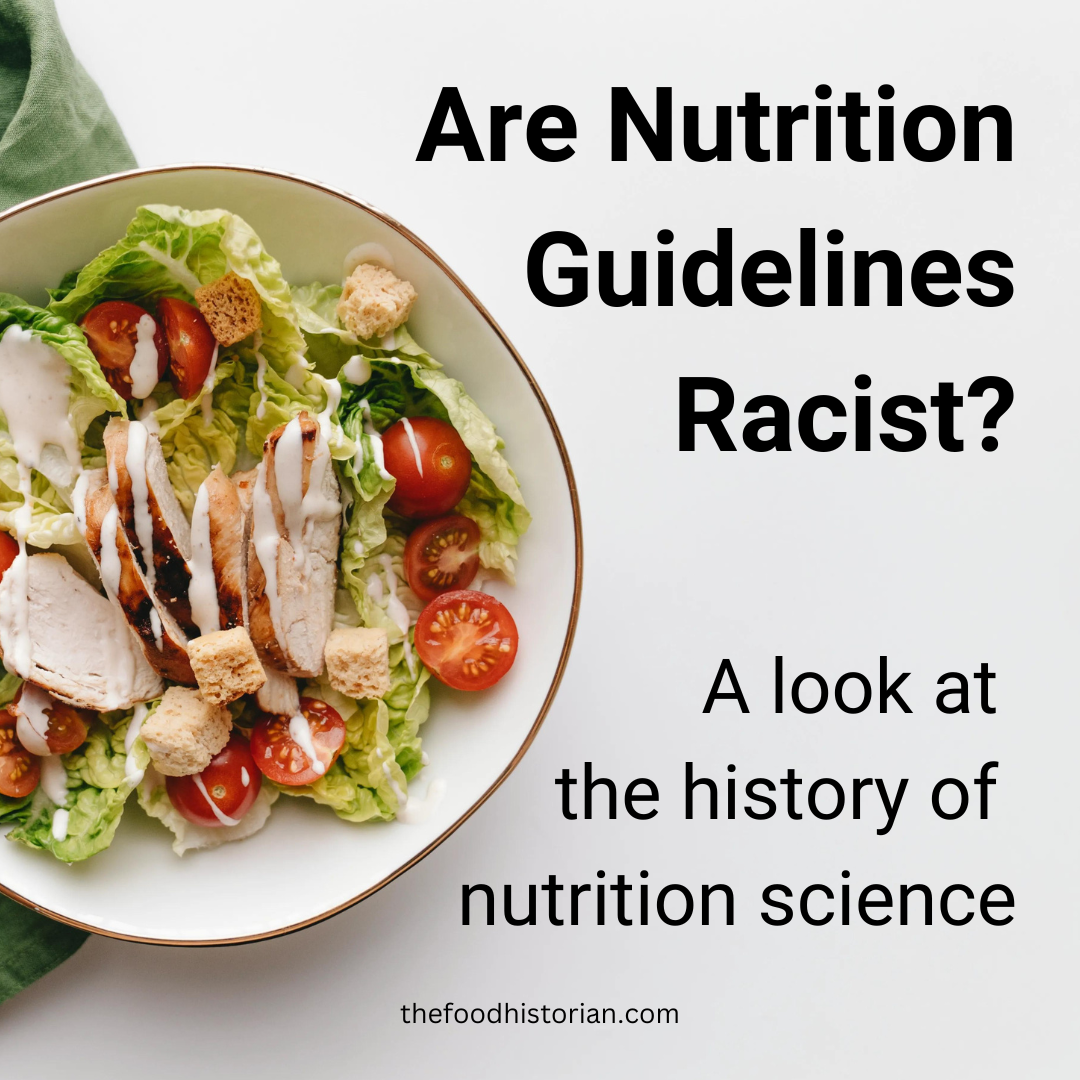

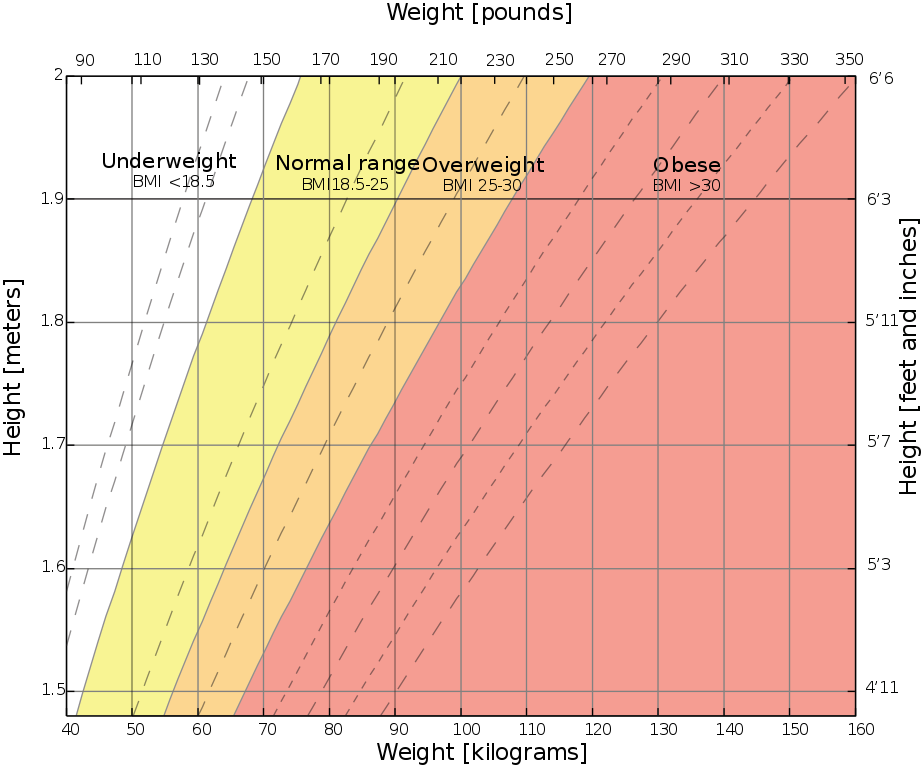
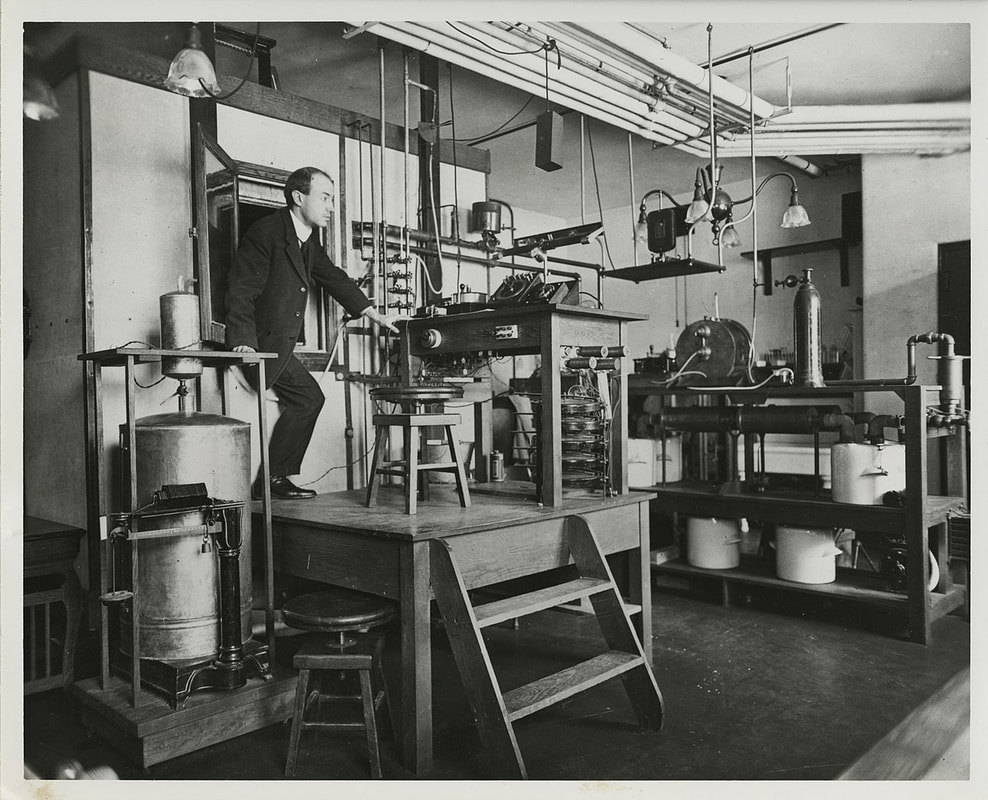


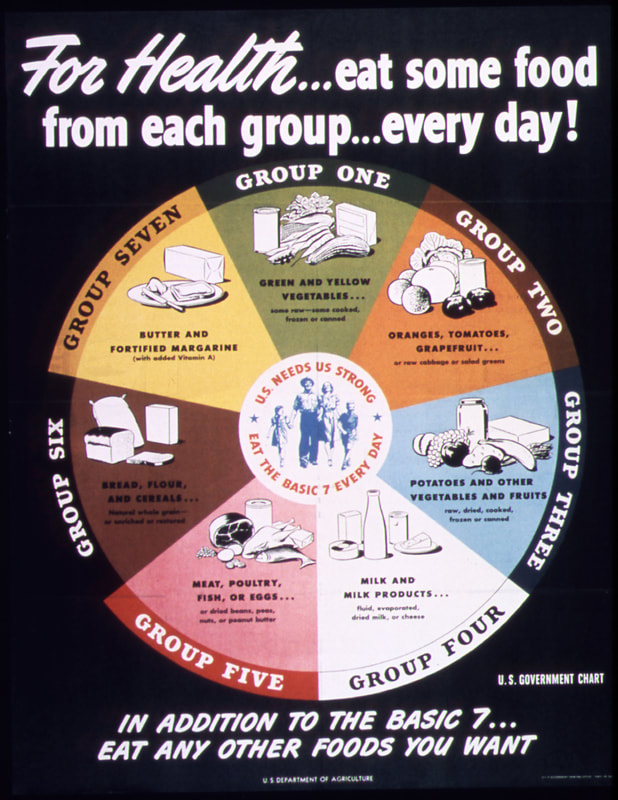



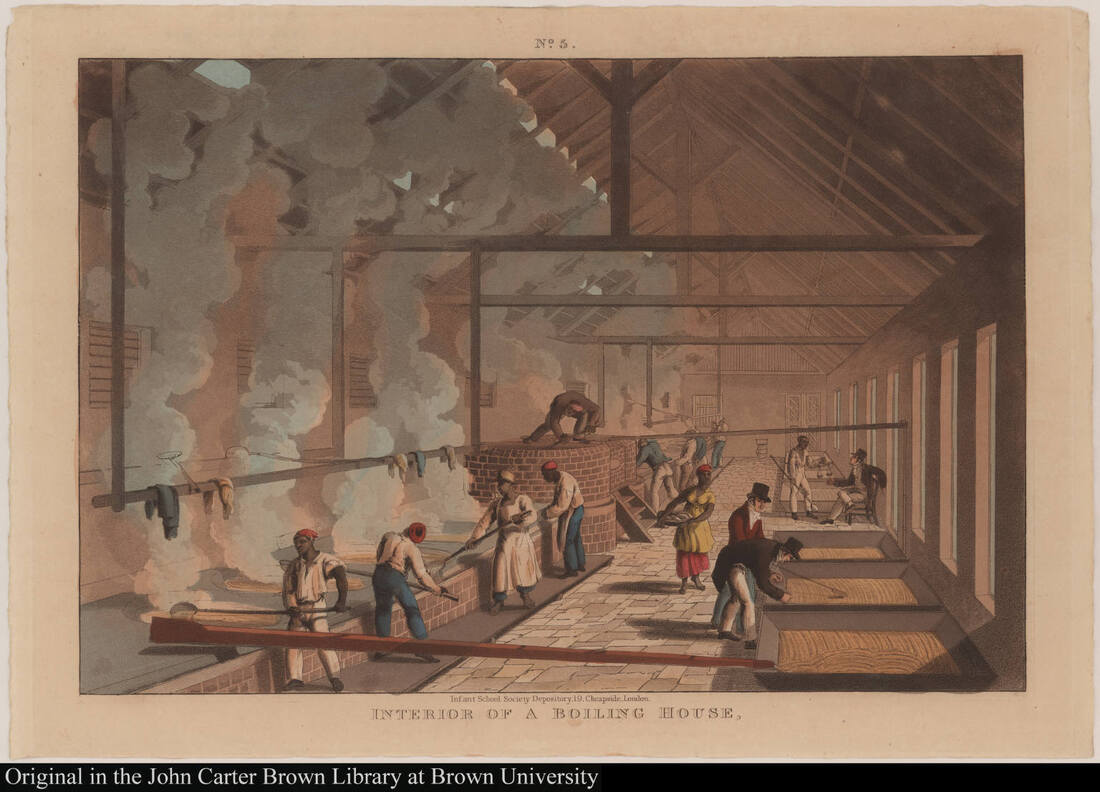



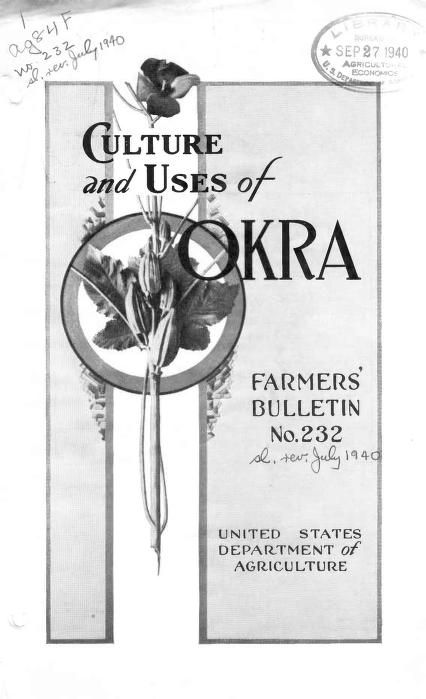

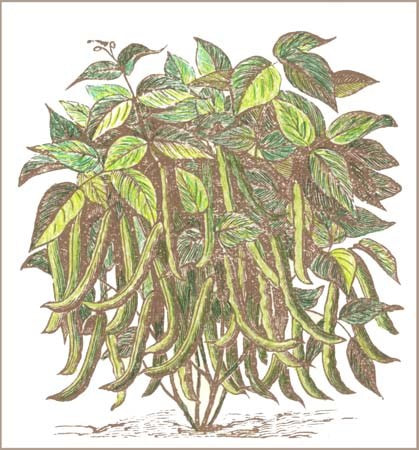

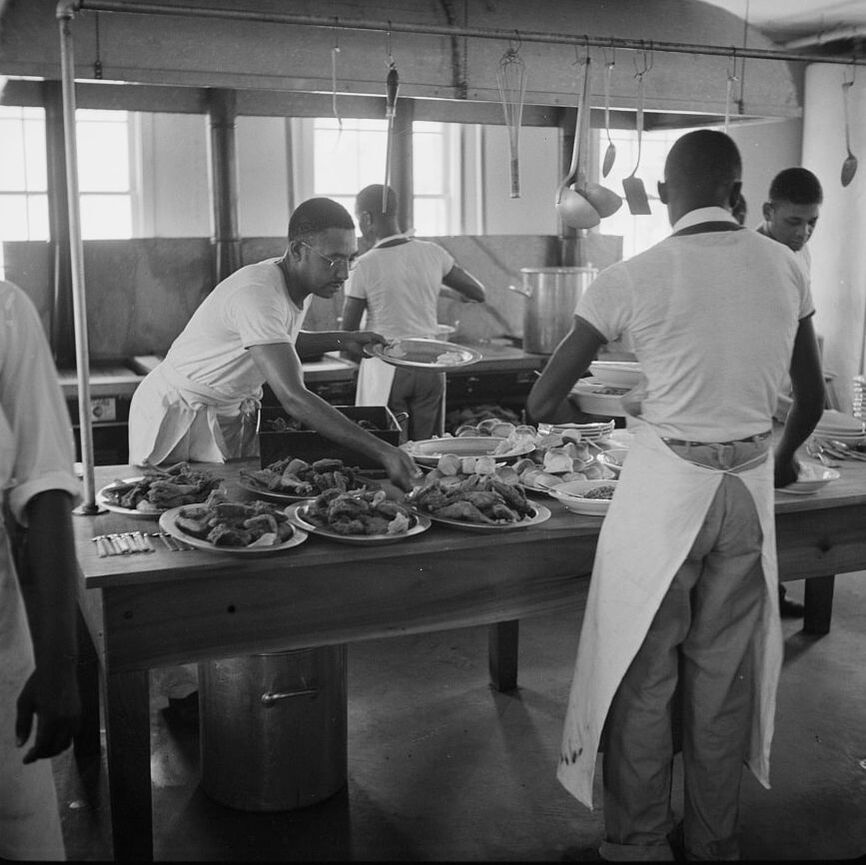
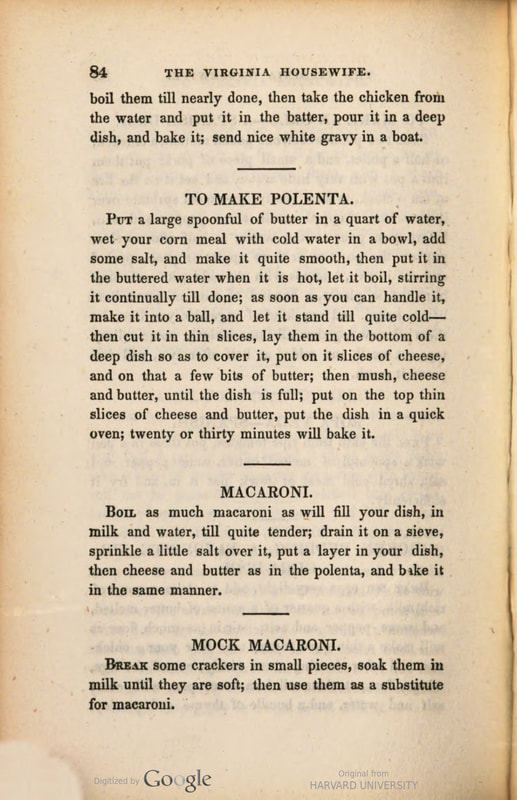



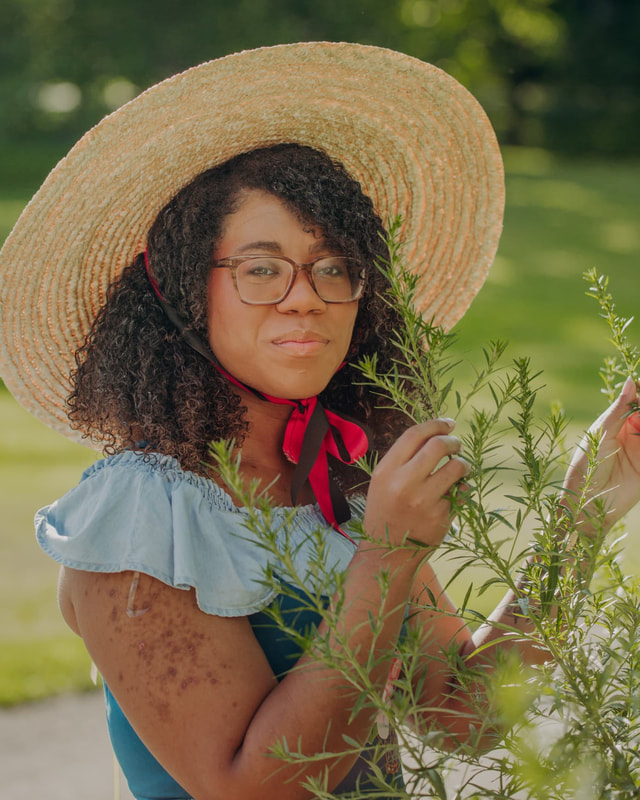

 RSS Feed
RSS Feed